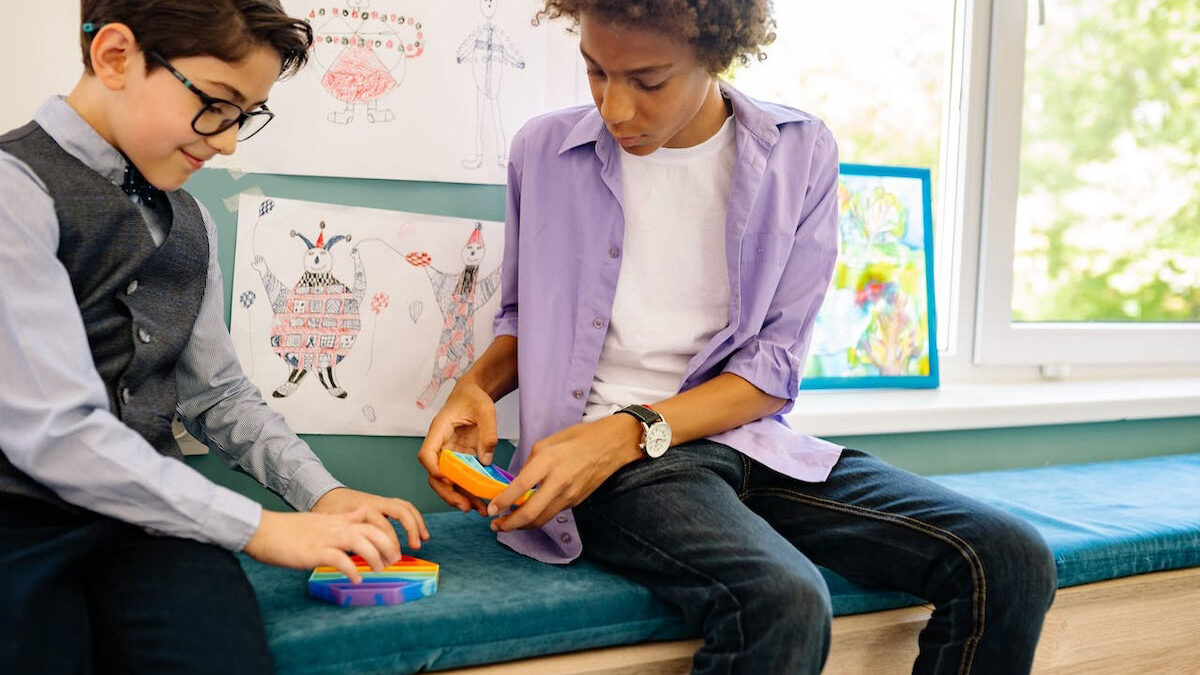Do fidget toys really work? And can you make your own fidget toys to save money? The answers are yes—and we’ll show you how.
The theory is if we have something purposeful to fidget with, we are less likely to get into things we shouldn’t. The fact is many humans like to fidget and product manufacturers are capitalising on that and constantly coming up with new ideas.
We fidget when we’re bored, uncomfortable or restless. Fidgeting can also be an indication that a person has a lot of stress or may have feelings of anxiety.
But the question remains: Is fidgeting a bad thing?
Let’s find out.
Stop fidgeting!
Children often get told off at school and home for fidgeting. Somehow, our culture has labelled fidgeting as a sign of bad behaviour. However, fidgeting is not all that bad and there is scientific evidence to prove it.
According to a 2013 study published in Frontiers in Psychology, fidgeting with something (think fidget toy, pen or stress toy) actually helps children retain more of the material they are learning. Product manufacturers have caught onto this. Some are working in line with industry best practices to come up with the best fidget toys.
It makes sense. If you’re in a board room meeting that’s dragging on for hours, sometimes the only way you can keep focused is to click your pen 100 times a minute. If you stop fidgeting, you stop focusing.
Perhaps next time you feel like reprimanding your kids for fidgeting, pause and consider if they are actually trying to stay focused. The current body of science shows that fidget toys improve attention, focus and behaviour, and can be especially helpful for younger children who may struggle with ADHD (attention-deficit/hyperactivity disorder).
What are the best fidget toys to buy?
When you’re thinking about buying a fidget toy, there are some points to consider that can make them more enjoyable and effective. Kids will reach for trending items or the most fancy-looking toys. It’s important to ensure the fidget toy they choose is right for your child and the environment (classroom, dinner table, etc).
Thankfully there are a lot more fidget toys to buy other than fidget spinners. When choosing a fidget toy, think about:
Noise
The perfect fidget toy should be quiet when used. You don’t want the fidgeting toy to cause distractions and interfere with communication. Something like a pop ball is noisy and can be irritating for others who are trying to focus.
Age-appropriate
Ensure the fidget toy is appropriate for the age of your child, is not a choking hazard and can be enjoyed.
Function
The fidget toy is not meant to be a distraction from the task at hand for the user. The toy should not require focus to be usable. Otherwise, it’s defeating the purpose.
Size
It’s important that a fidget toy is not too big, otherwise it’s pointless. The size will interfere with the purpose of the toy. Consider a product that will fit into a regular pencil case or be able to be held in the palm of one hand. A small metal fidget spinner can do the trick or a fidget toy that sits on the top of a pencil.
Sensory stimulation
If you want to buy a toy that’s going to be used on certain occasions where focus is not required, you might consider buying sensory fidget toys. These toys can be great for kids or adults with autism, to encourage sensory input and development. These can be helpful for road trips or any time when there might be longer periods of wait time.
There is a wide range available including sensory balls, squishy toys and soft fur toys to provide a sensory outlet, or even something like a fidget cube with different buttons to promote tactile awareness.
Often, these toys can come in three different colours. If you are aware your child can get sensory overload with too many options, it’s best to pick something neutral and less bright. There’s a wide range you can purchase online for special needs, stress relief or just for fun. Many stores even offer free shipping.
Shop around
With so many toys for sale and stores selling them, you may need to shop around to find the ideal product. Sometimes that also means paying the regular price.
If you find yourself at the many small pop-up stores that sell fidget toys, it can be a way to support a small locally owned business, as they will get a small commission from the products they sell.
You may also consider buying a fidget toy box, which comes with a range of fidget toys inside. These could be used over the year or shared among the kids.
DIY fidget toys
Fidget toys can be great if they work for your child and you’re willing to spend money. There are of course some good old-fashioned homemade fidget toys you can make yourself:
- a balloon with flour inside for a stress ball
- paper origami shapes
- pipe cleaners
- beaded bracelets
- a Lego fidget spinner
Remember, fidgeting is not all that bad. Using a fidget toy to promote focus can improve concentration and learning.
It might be a case of trial and error before you find the ideal fidget toy for your child, and that’s OK. Find what works and enjoy it.
How helpful was this article?
Click on a star to rate it!
0 / 5. 0
Be the first to rate this post!
Adriana Wales
Related posts
Subscribe
Receive personalised articles from experts and wellness inspiration weekly!


